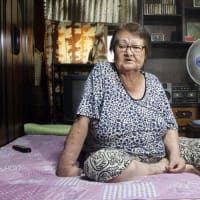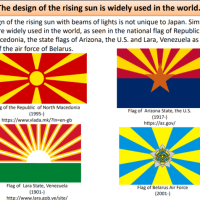Tina is just one victim in an decades-long epidemic of violence that has claimed the lives of thousands of indigenous women. Ever since the 1970s – when aboriginals were encouraged to migrate to the cities – women of all ages have been shipped back to their families in coffins, said Derek Nepinak, the Grand Chief of the Assembly of Manitoba Chiefs (AMC). “I lost an aunt in Winnipeg in 1978,” he said. “This is not a new phenomenon by any means.”
But Canadians are finally starting to pay attention.
In its first attempt to gauge the scale of the problem, the Royal Canadian Mounted Police (RCMP) last year retrieved data from 300 police authorities across the country. The study concluded between 1980 and 2012, at least 1,017 First Nations women were murdered, while a further 108 went missing in suspicious circumstances.
First Nations leaders acknowledge that violence is a problem on the reserves – which are beset with poverty, drug abuse and unemployment. But only 40% of the country’s indigenous people actually live on reserves, and activists and analysts say the abuse and murder visited on Canada’s indigenous women reflects a broader history of marginalization and abuse.
That view is shared by the United Nations, which has repeatedly called for a national inquiry into violence against First Nations women, similar to the investigation launched into the murder of hundreds of women in Ciudad Juárez in Mexico.
The UN’s Committee on the Elimination of Discrimination against Women (Cedaw) concluded last year that the Harper government’s refusal to investigate the violence was “a grave violation” of indigenous women’s rights.
Nahanni Fontaine, a special adviser to the Manitoban government on aboriginal women’s issues, argues that the violence is a form of collateral damage wrought by centuries of prejudice. “From the first moments of contact with European explorers, indigenous women were scorned and stereotyped as promiscuous because they owned their sexuality and were treated as equals by their male counterparts,” she said.
Such contempt for indigenous women was reinforced by brutal attempts to force First Nations to assimilate into mainstream Canadian society. Earlier this month the country’s Truth and Reconciliation Commission described such policies as a form of “cultural genocide” in a report on the state-sponsored, church-run Indian Residential School system.
One of those children was Sue Caribou, who in 1972 was separated from her family at the age of seven, and taken to a Catholic school where for the next five years she was physically and sexually abused by missionaries who forbade her from speaking Cree, her native language.
The violence has never stopped: by the time Caribou left the school in 1979, both her parents had been murdered. Now aged 50 years old, Caribou has lost three female relatives to murder. The last was her beloved niece Tanya Nepinak, who disappeared in 2011 on her way to get pizza in Winnipeg. She was 31 years old.
Justice for the missing or murdered
Canada’s worst serial killer also targeted First Nations women: pig farmer Robert Pickton tortured and killed at least 33 aboriginals before he was arrested in British Columbia in 2002.
Soon after his arrest, Amnesty International concluded that perpetrators of violent crimes tend to target them because the “police in Canada have often failed to provide Indigenous women with an adequate standard of protection”
A dysfunctional foster care system
Activists say that the city’s social services – which should be protecting vulnerable indigenous children – are instead exposing them to further risk by plunging them into a dysfunctional foster care system.
Indigenous children make up 87% of the children in foster care in Manitoba, even though they only account for 34% of the province’s population under 18. This means that at any given time, nearly 10,000 native children are under the care of the provincial Child and Family Services department (CFS).
“We see a direct correlation between girls who are taken into foster care at a young age and women who go missing,” says Grand Chief Nepinak of the AMC. “We have to stop traumatising our children.”
Carolyn Sinclair was separated from their alcoholic mother when she was only two. She and her sister Amanda were placed in a foster home where Carolyn was sexually abused, and by the time they were teenagers, both girls were using hard drugs.
カナダでは、原住民が、強制的に白人文化に適応させられ、虐待、性的虐待をうけ、その苦しみから逃れるために、酒や麻薬に走る人も多く、その結果子供は孤児院に入れられるが、そこで、また、性的虐待を受けるといった、悪しき循環の歴史がある、と。
人種差別意識が強烈に強いせいであろう、原住民の女性が殺されても、捜査もされないでおり、摘発されないで、犯罪の標的になる、というように、これまた、悪しき循環を形成してしまっている、と。
犯罪がおきても調査もしないのは、原住民女性に対する人権侵害である、と。
異文化の女性は、ふしだら、という固定観念を拡散し、それでいて、自分たちより劣等であり、従って、性的搾取してもよい、しかも、被害者が泣き叫んでも、加害者が同族ならば、お咎めなし、報道もしない、と。
NYTのファクラー記者ならよくご存知のはずの構造がここでもみられるのであります。




















